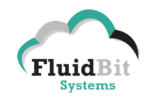
As your cravings for alcohol become more manageable, you may decide to try reintroducing situations that previously triggered your temptation to drink. These cravings can be frustrating if you’re trying to cut down on alcohol, drink less or stop drinking completely, but they are quite normal. Twelve-step program Online therapy and intensive outpatient treatment programs are widely available and can be accessed from the comfort and privacy of your home. Alcohol use disorder has also been linked to a higher risk of several cancers, including colon, breast, oral, liver, and throat cancers. The online recovery community expanded dramatically during the COVID-19 lockdown. Support groups and meetings can be found 24 hours a day from the comfort of your home with a variety of recovery programs to choose from.

People with ADHD and Addiction: The Fascinating Connection
- Because alcohol destroys the liver, milk thistle can support your physical recovery.
- A 2017 research review did not find that this therapy was more effective than other forms of relapse prevention.
- The outcomes in reducing or abstaining from substance use seem acceptable, except for opioids.
- The twelve-step program Alcoholics Anonymous (AA) is an effective abstinence-promoting method that has benefited more than two million people, but other programs and techniques are also in use.
- When a person uses a substance regularly, the body becomes used to it and develops a tolerance.
- One is that it raises your blood alcohol levels faster, which means you may feel intoxicated sooner.
Therefore, surrounding yourself with loved ones and people you trust can help you in your recovery. These people can help keep you accountable, distract you with conversation and activities, and help you keep your mind off alcohol. Throughout the course of withdrawal, you may experience vomiting, diarrhea, and excessive sweating. Each of these symptoms can deplete your bodily fluids, leading to dehydration and worsening symptoms.
Finding Help for Alcohol Detox

Remember, natural remedies should be used as a complementary approach alongside other strategies, such as therapy, counseling, and lifestyle changes. Every individual’s journey to sobriety is unique, and it’s important to find a comprehensive approach that suits your specific needs and goals. Milk thistle (Silybum marianum) is a flowering herb that has been used for centuries for its liver-protective properties. The active compound in milk thistle, silymarin, is believed to have antioxidant and anti-inflammatory effects, helping to support liver health.
- The level of detail in which inclusion and exclusion criteria were described also varied widely across publications, making comparability difficult.
- By dealing with this issue, you will have already eliminated an important factor weighing into this condition.
- Many people with alcohol use disorder struggle with dehydration and nausea during withdrawal.
- Each person’s situation is unique, and factors such as genetics, mental health, and social environment will also influence success in quitting alcohol.
- Schizophrenia is often considered one of the hardest mental illnesses to live with due to its severe impact on perception, thinking, and reality.
- The condition can lead to social isolation, difficulty maintaining relationships, and challenges in daily functioning without proper treatment.
We and our partners process data to provide:

In addition, ashwagandha has been used in traditional Ayurvedic medicine for centuries to promote overall wellness Cure for Alcohol Withdrawal Symptoms and improve physical and mental health. While eating a healthy diet will help supplement some of the vitamins you lost due to alcoholism, it won’t be enough. In addition to restoring your health, vitamins, and minerals are crucial for boosting your immune system, strengthening your bones, helping you get a good night’s sleep, and much more. Changing your daily habits and environment can support your goal of quitting alcohol. While these changes may sound straightforward, they have a profound impact on your ability to sustain long-term sobriety or reduced drinking. St. John’s Wort (Hypericum perforatum) is known for its potential antidepressant effects.
- Alcohol consumption depletes thiamine (Vitamin B1), folate, and magnesium, leading to neurological and metabolic complications.
- Mental health disorders don’t just affect the individual; they impact families, careers, and overall quality of life.
- These interactions can produce effects similar to opioids, such as pain relief, euphoria, and sedation.
- Aromatherapy can help reduce stress and anxiety, making it easier to manage withdrawal symptoms.
- It’s important to work with a healthcare professional to develop a comprehensive treatment plan that addresses all aspects of your recovery journey.
Heath Ledger – How He Fell Victim to Addiction
Ultimately, those detoxing at home will have to push through the difficulties of withdrawal themselves. However, valepotriates are thought to be absent from most commercial valerian products, and case reports suggest that even very high doses of valerian do not harm the liver. Herbs and supplements with the potential to irritate the stomach, such as white willow and arginine, should be used only with caution by people who consume excessive alcohol. Other studies found that liver toxicity was caused in a few cases of individuals taking whole valerian with other supplements that interact.

Understanding the Link Between Trauma and Addiction

Before starting any complementary treatment, be sure to discuss it with a doctor to make sure it’s safe for you. Omega-3-rich fish like salmon and mackerel may also help improve focus and overall brain health. The fiber-rich, complex carbohydrates in whole-grain breads and foods like brown rice, quinoa, barley, and farro are digested more slowly, which help keep blood sugar levels steady. This is key to keeping cravings under control, especially when your body is used to using alcohol as a quick form of fuel. External triggers are things in your environment that make you want to drink alcohol. These triggers can be people, places, or things that make you crave alcohol.
